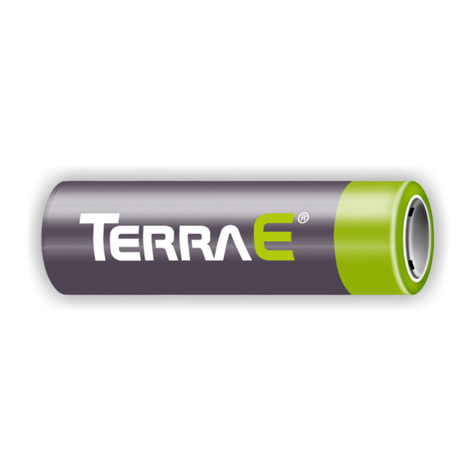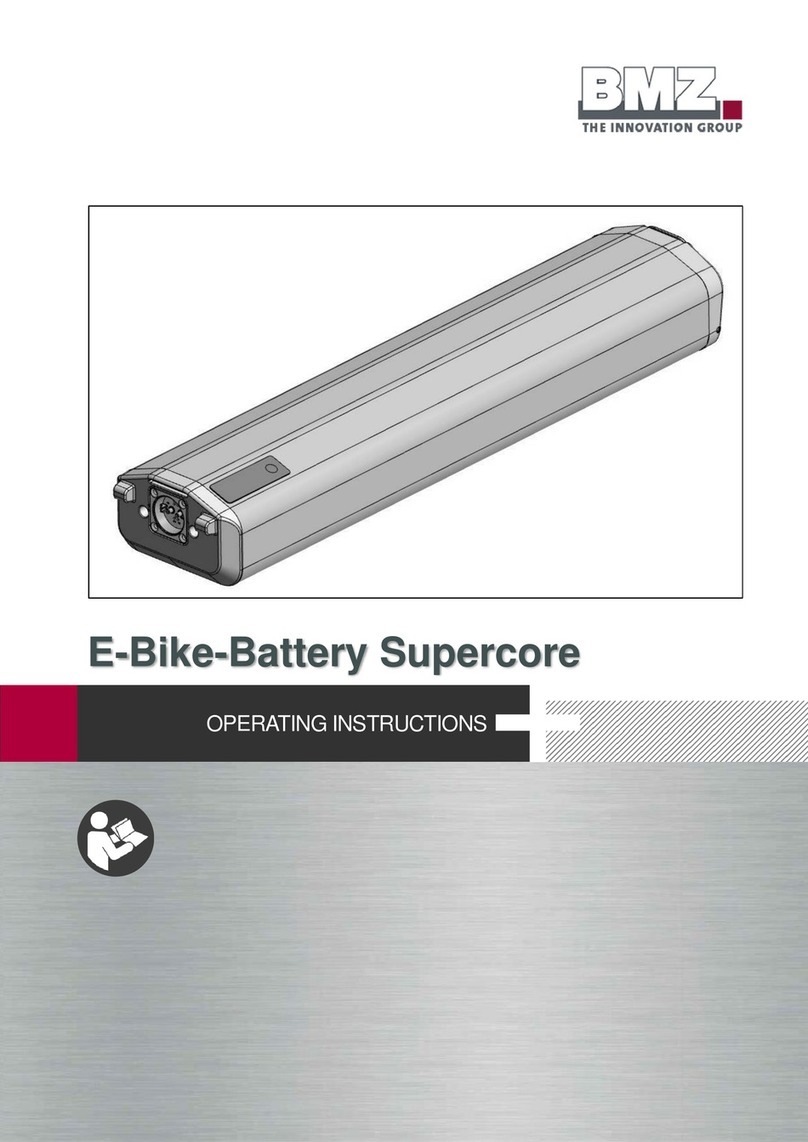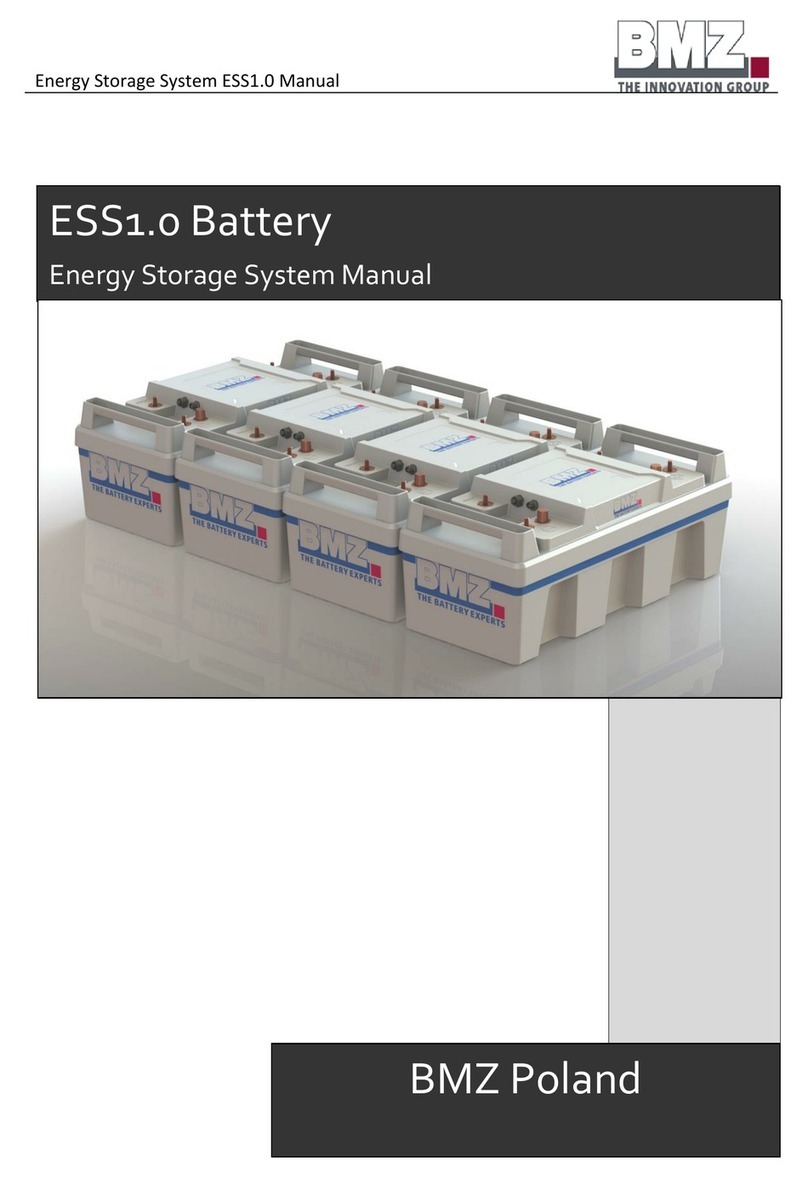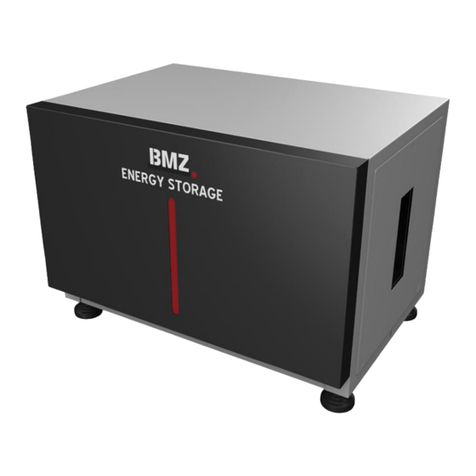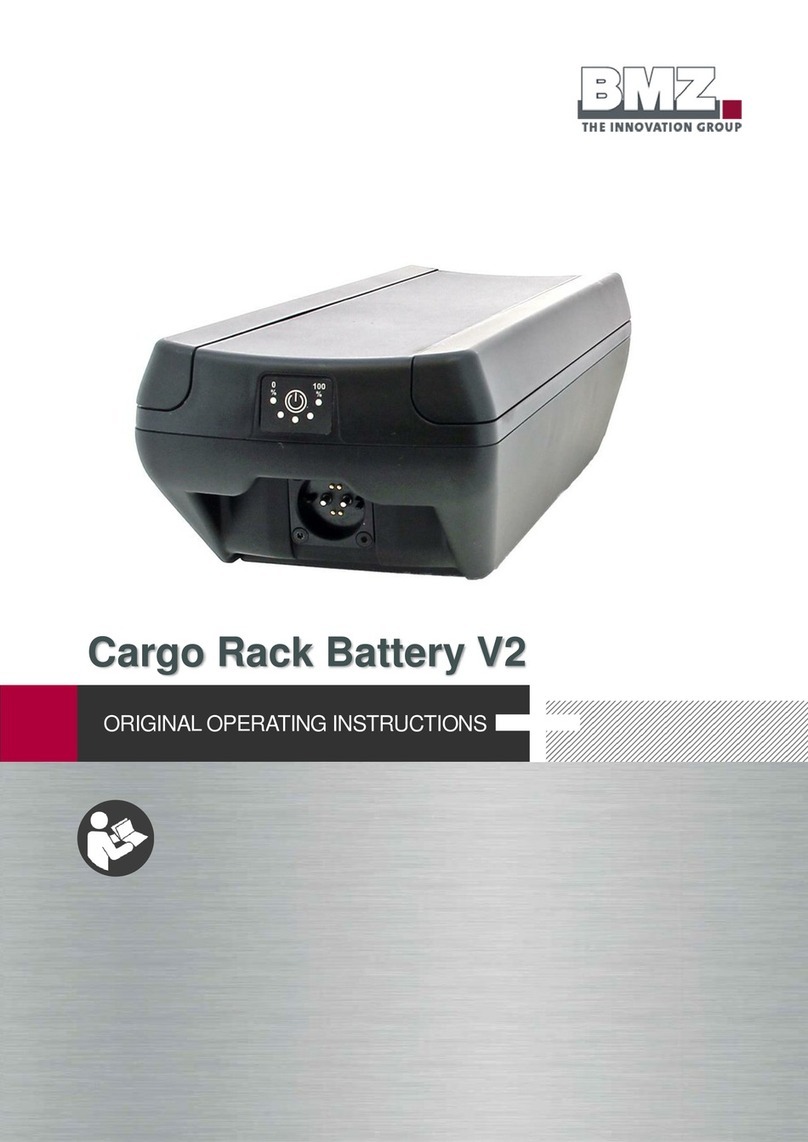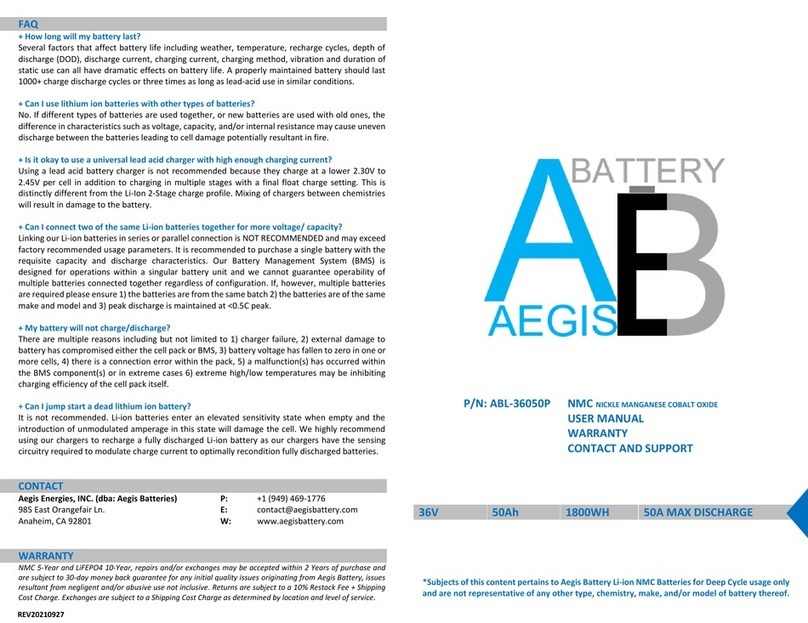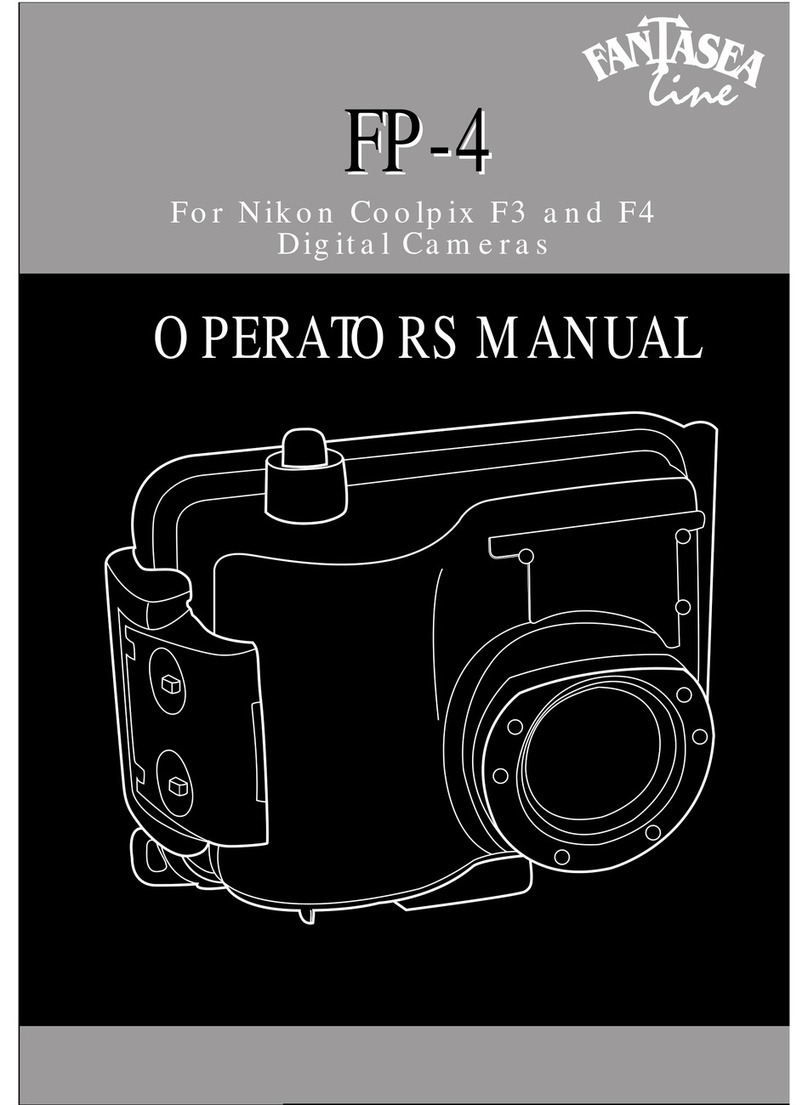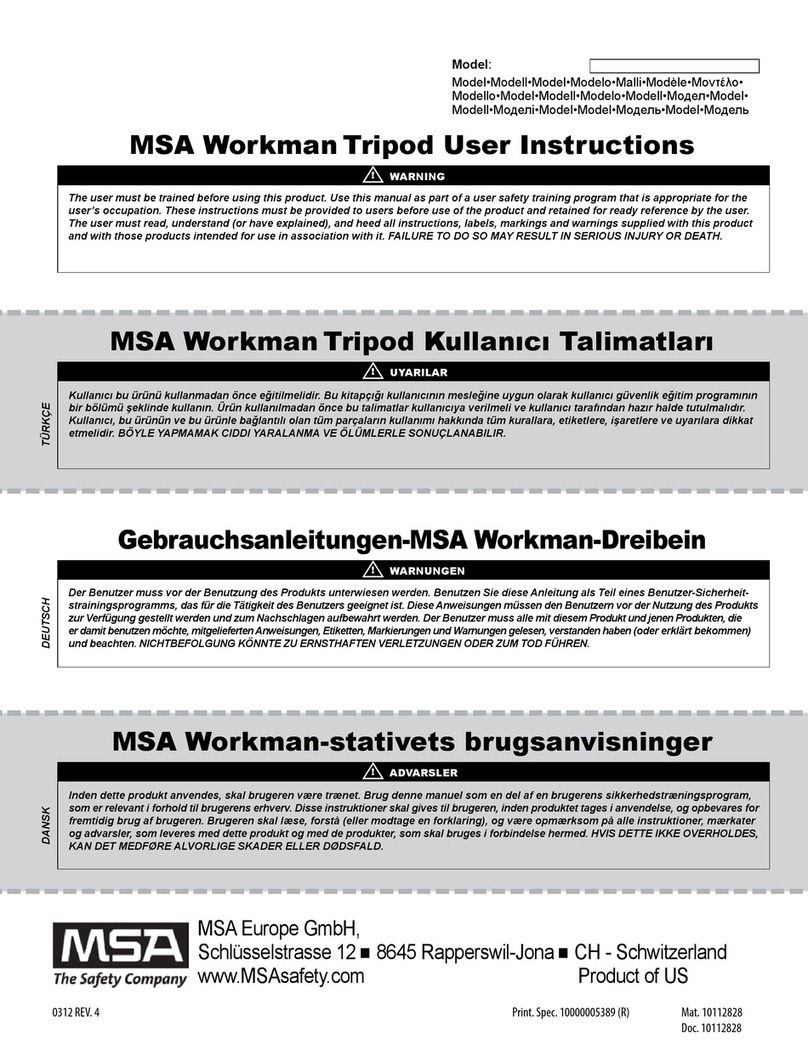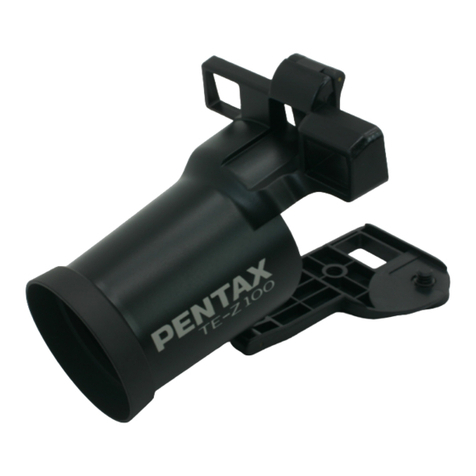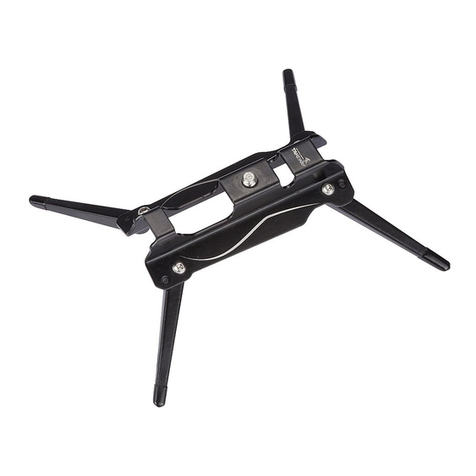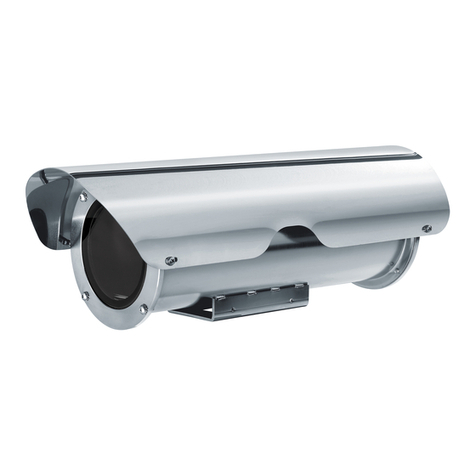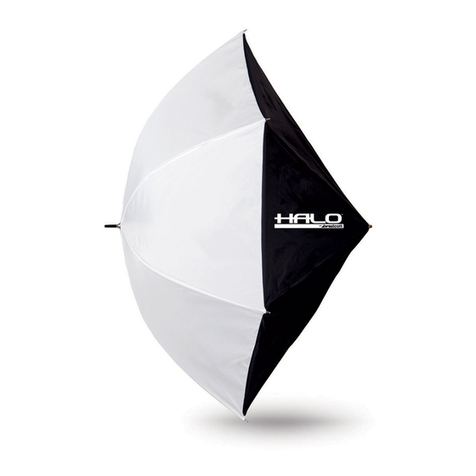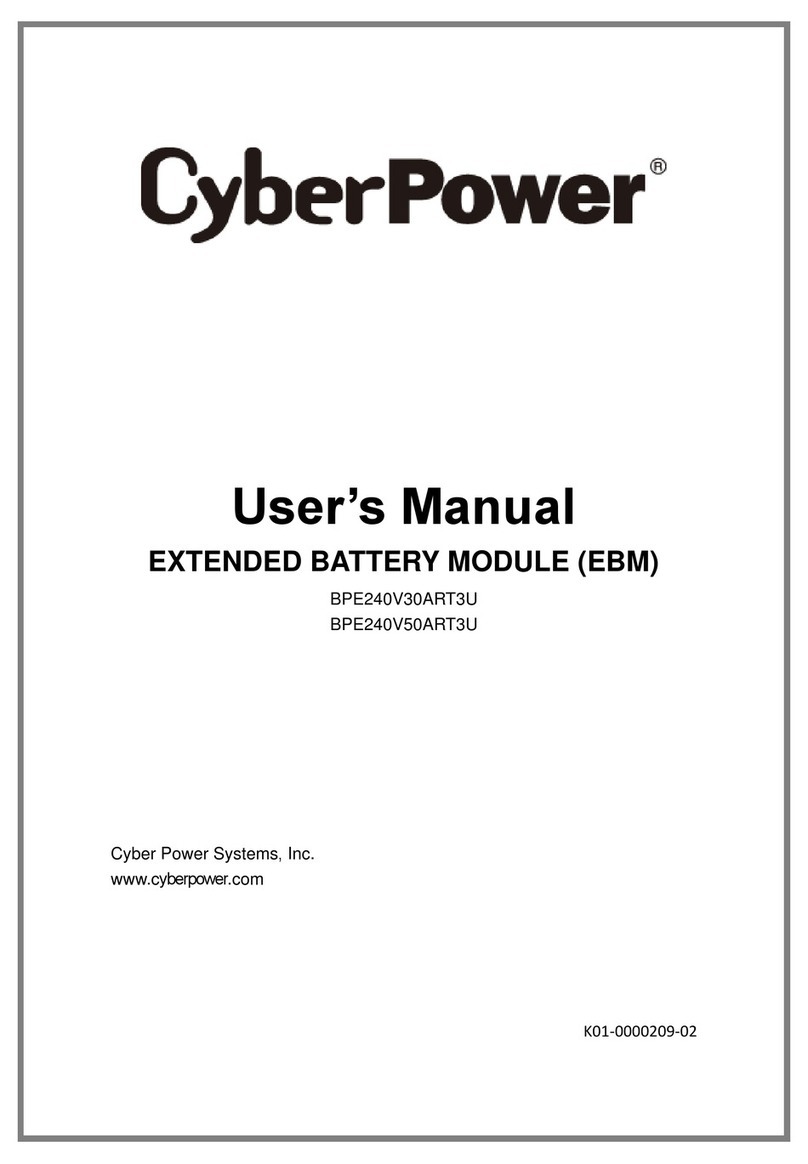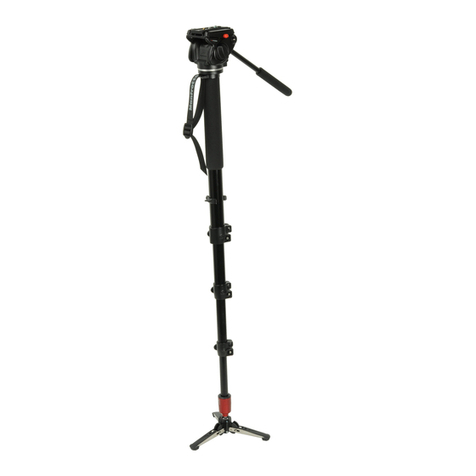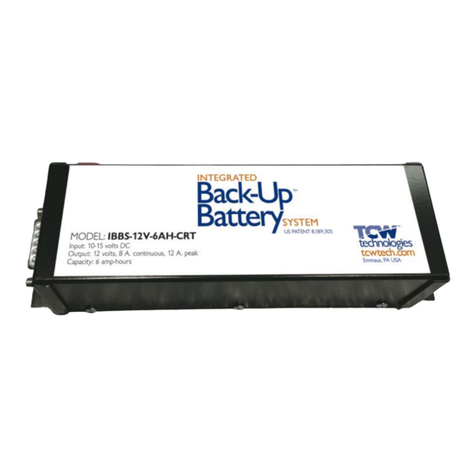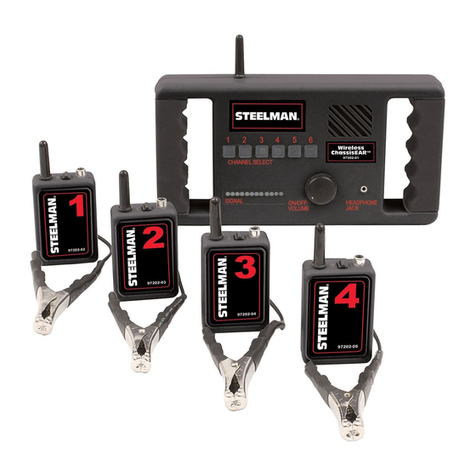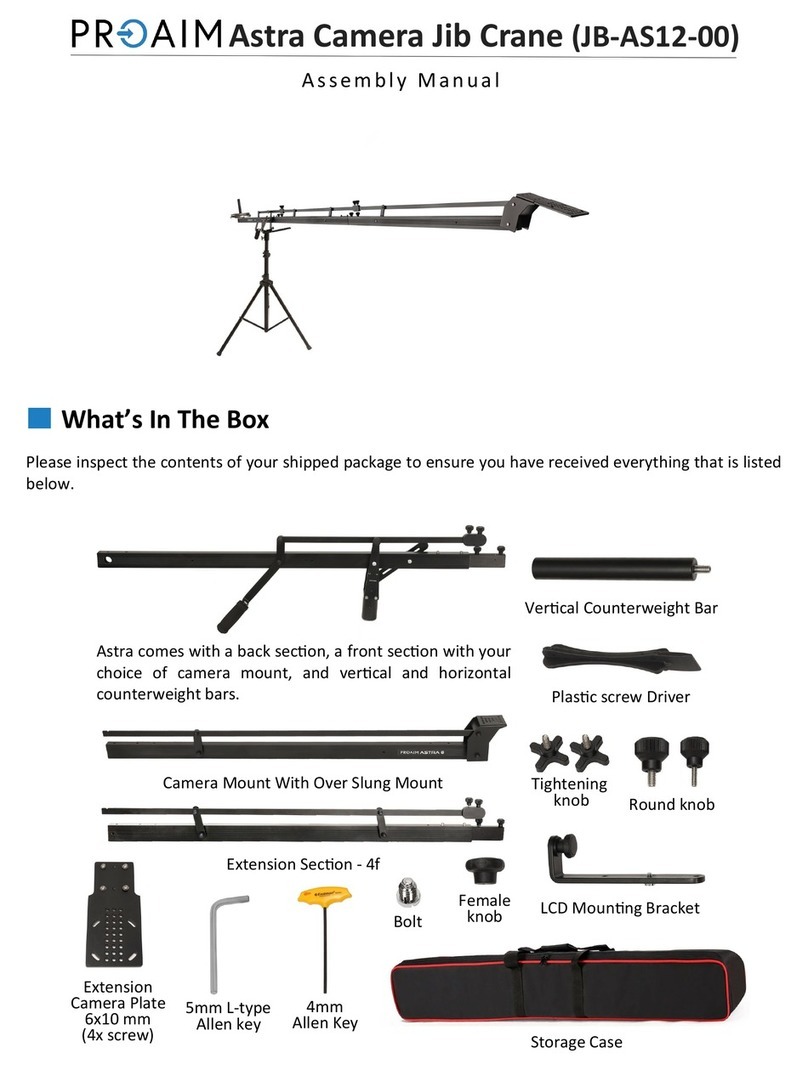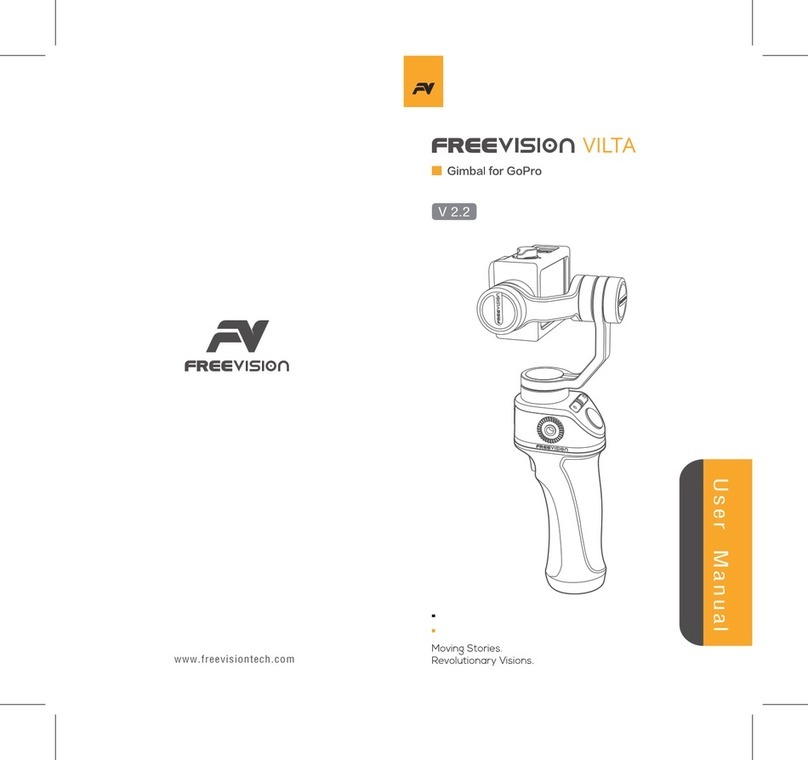BMZ TERRAE INR 21700 50 E User manual

www.bmz-group.com
CELL SPECIFICATION
INR 21700 50 E
E-MOBILITY DRIVE
SYSTEMS
POWER- AND
GARDENTOOLS
INDUSTRIAL MEDICALENERGY STORAGE
SYSTEMS

2
1. SCOPE
The product specification describes the requirements of the Cylindrical Lithium-ion Cell to be supplied to the customer by
TerraE. Should there be any additional information required by the customer, customer are advised to contact TerraE.
2. DESCRIPTION AND MODEL
INR 21700 50 E
Cylindrical Lithium Ion Cell
2.1 DESCRIPTION
2.2 MODEL
Cylindrical Lithium Ion Cell
INR_21700_50_E
3. GENERAL SPECIFICATIONS
3.1 NOMINAL CAPACITY
MINIMUM CAPACITY
5000mAh (at 0.2C Discharge)
4900mAh (at 0.2C Discharge)
Nominal capacity is measured by the discharge at 0.2C to 2.5V end voltage after standard fully charged according to
specification at 25°C.
4.20V ± 0.03V
3.60V
Constant Current and Constant Voltage (CC/CV)
0.2C (1000mA)
4.2V
100mA ± 5mA
3.2
MAXIMUM CHARGE VOLTAGE
3.3
AVERAGE WORKING VOLTAGE
3.4 STANDARD CHARGE METHOD (25°C ± 2°C)
3.5 MAXIMUM CHARGE CURRENT
3.6STANDARD DISCHARGE
3.7MAXIMUM DISCHARGE CURRENT
3.8CYCLE LIFE
0.1C (500mA)
0.2C (1000mA)
0.3C (1500mA)
0.4C (2000mA)
0.7C (3500mA)
0.2C (1000mA)
2.5V
1.0C (5000mA
3.0C (15000mA)
1.0C (5000mA)
TerraE Confidential Proprietary and not be reproduced without written permission from BMZ Germany GmbH, Zeche Gustav 1, 63791 Karlstein
Current
Voltage
End Current
1C (at 25°C, not ideal for cycle life)
Recommended charge rates:
0°C ≤ T ≤ 5°C
5°C < T ≤ 10°C
10°C < T ≤ 15°C
15°C < T ≤ 25°C
25°C < T ≤ 45°C
Constant Current (CC)
Current
End Voltage
3C (at 25°C, not ideal for cycle life)
Recommended discharge rates:
-20°C ≤ T ≤ 25°C
25°C < T ≤ 40°C
40°C < T ≤ 55°C
80% SOH after 800 cycles at 25°C with 0.5C Cha/1C DCha

Dimension: Diameter 21.7mm ± 0.2mm, Height 70.9mm ± 0.2mm. Refer to the attached drawing 1.
5. APPEARANCE
There shall be no such defect as deep scratch, flaw, crack, rust, leakage, which may adversely affect commercial value of the cell.
6. TEST CONDITION AND DEFINITIONS
7. CHARACTERISTICS
3
INR 21700 50 E
Cylindrical Lithium Ion Cell
3.9WEIGHT OF BARE CELL
3.10OPERATING ENVIROMENTAL TEMPERATURE
3.11STORAGE TEMPERATURE (FOR SHIPPING STATE)
4. OUTLINE DIMENSION (UNIT: MM)
Avg. 72g ± 4g
Charge 0°C ~ 45°C
Discharge -20°C ~ 55°C
1 month -20°C ~ 50°C
3 months -20°C ~ 40°C
12 months -20°C ~ 20°C
6.1 MEASURING EQUIPMENT
6.1.1 ELECTRONIC BALANCE
6.1.2 MANUAL VOLTAGE-IMPEDANCE TESTER
6.1.3 DIGITAL CALIPER
Parameter mileage 0.01g-160g,accuracy 1mg
Impedance: Parameter mileage 0-3.1kΩ, accuracy 0.1μΩ,
The impedance meter should be operated at AC 1kHz
Parameter mileage 0-150mm, accuracy ± 0.02mm,
resolution ratio 0.01mm
6.2 Unless otherwise specified, all tests shall be performed at 25°C ± 2°C and humidity of 65%RH ± 20%RH. The cells used
for the test mentioned should be new ones delivered a week before at most.
6.3 DEFINITION C Rate (“C”):
The rate (milliamperes) at which a fully charged cell is
discharged to its end voltage in one (1) hour.
7.1 CHARGE METHOD
7.1.1 Charging shall consist of charging at a 0.2C constant current rate until the cell voltage reaches 4.2V. The cell shall then be
charged at constant voltage of 4.2V while tapering the charge current. Charging shall be terminated when the charging
current has tapered to 0.02C.
7.1.2 Charging shall consist of charging at a 0.3C constant current rate until the cell voltage reaches 4.2V. The cell shall then be
charged at constant voltage of 4.2V while tapering the charge current. Charging shall be terminated when the charging
current has tapered to 0.05C.
7.1.3 Charging shall consist of charging at a 1.0C constant current rate until the cell voltage reaches 3.80V ,0.8C constant
current rate until the cell voltage reaches 4.00V, 0.6C constant current rate until the cell voltage reaches 4.10V, 0.4C
constant current rate until the cell voltage reaches4.19V, 0.2C constant current rate until the cell voltage reaches 4.195V,
0.05C constant current rate until the cell voltage reaches 4.20V.
TerraE Confidential Proprietary and not be reproduced without written permission from BMZ Germany GmbH, Zeche Gustav 1, 63791 Karlstein

4
INR 21700 50 E
Cylindrical Lithium Ion Cell
7.2 DISCHARGE METHOD
7.2.1 Cells shall be discharged at a constant current of 0.2C to 2.5 volts
7.2.2 Cells shall be discharged at a constant current of 0.5C to 2.5 volts
7.2.3 Cells shall be discharged at a constant current of 1.0C to 2.5 volts
7.2.4 Cells shall be discharged at a constant current of 2.0C to 2.5 volts
7.2.5 Cells shall be discharged at a constant current of 1.0C to 2.5 volts
7.3 INTERNAL IMPEDANCE
7.4 DISCHARGE RATE CHARACTERISTICS
The impedance shall be measured by 6.1.2
Initial Internal Impedance ≤ 20mΩ
Cells shall be charged per stardard charge method at
25°C ±2°C and discharged per 7.2.1 (0.2C), 7.2.2 (0.5C),
7.2.3 (1C), 7.2.4 (2C). The discharge capacity of each cell
at respective discharge rate shall be compared with the
discharge capacity at 0.2C and the percentage shall be
calculated. Each cell shall meet or exceed the requirements
of Table 1.
Table 1
0.2C 100%
0.5C ≥95%
1.0C ≥93%
2.0C ≥90%
7.5 CYCLE LIFE
Charge cells per 7.1.2. Rest 30 minutes. Discharge per 7.2.3. Rest 30 minutes before recharge. The test enviromental
temperature is 25°C ±2°C. A cycle is defined as one charge and one discharge. Discharge capacity shall be measured
after 800 cycles.
Discharge capacity (800th Cycle) ≥80% of 1st Cycle Capacity
7.6 STORAGE CHARACTERISTICS
7.6.1 After charge as per stardard charge method 7.1.1, store the testing cells at 25°C ± 2°C for 28 days. Then discharge as
per 7.2.3. Then the same cell is fully charged as per 7.1.1 again and discharged a second time and measured as per 7.2.3
The recovery discharge capacity (2nd discharge capacity) ≥90% of Initial capacity.
7.6.2 After charge as per stardard charge method 7.1.1, store the testing cells at 55°C ± 2°C for 7 days. Then discharge as
per 7.2.3. Then the same cell is fully charged as per 7.1.1 again and discharged a second time and measured as per 7.2.3
The recovery discharge capacity (2nd discharge capacity) ≥90% of Initial capacity.
TerraE Confidential Proprietary and not be reproduced without written permission from BMZ Germany GmbH, Zeche Gustav 1, 63791 Karlstein

5
INR 21700 50 E
Cylindrical Lithium Ion Cell
7.7 TEMPERATURE CHARACTERISTICS
Cells shall be charged per stardard charge method and discharged per 7.2.3. Cells, full charged, shall be stored for 3
hours at the test temperature prior to discharging and then shall be discharged at the test temperature, when -20°C
discharge per 7.2.5. The capacity of a cell at each temperature shall be compared to the capacity achieved at 25°C and
the percentage shall be calculated. Each cell shall meet or exceed the requirements of Table
Table 2
-20°C ≥70%
-10°C ≥70%
0°C ≥80%
25°C ≥100%
45°C ≥95%
55°C ≥90%
8. SAFETY
8.1 EXTERNAL SHORT-CIRCUITING TEST AT 25°C
8.2 OVERCHARGE TEST
8.3 OVERDISCHARGE TEST
8.4 HEATING TEST
Cell, charged per stardard charge method, is to be short
circuited by connecting the positive (+) and negative (-) ter-
minals with a total external resistance of 80 mΩ ± 20mΩ.
Stop the test when the cell voltage falls below 0.1V and the
cell case temperature has returned to a value within 10°C
of the original testing temperature.
Criteria: No Fire, No Explosion
Cell, charged per stardard charge method, is to be over-
charged with 1C to 6.3V while tapering the charge current.
Monitoring change of cell temperature during testing. Stop
the test when cell temperature decays to room tempera-
ture.
Criteria: No Fire, No Explosion
Cell, charged per stardard charge method, is discharged at
constant current of 1C for 90min.
Criteria: No Fire, No Explosion
Cell, charged per stardard charge method, is to be placed in
the hot oven.Store the testing cells connecting with ther-
mocouple in constant temperature box, heating the cells
and box(speed of ascending temperature is 5°C ± 2°C per
min) together at room temperature simultaneity, monitor
the temperature change of the box, keep for 30 minutes
after the box temperature reaches 130°C ± 2°C, then stop
the test.
Criteria: No Fire, No Explosion
TerraE Confidential Proprietary and not be reproduced without written permission from BMZ Germany GmbH, Zeche Gustav 1, 63791 Karlstein

9. PACKAGING
Loading 64 cells per box, 2 boxes per case for a total of 128 cells. Sketch map refer to attached drawing 2
10. OTHERS
Any matter not included in this specification shall be confered between the both parties.
11. SHIPPING
The capacity of delivery cell is under 20% - 30% SOC. It is not specified more than capacity remain at customer, because of
self-discharge. During transportation, keep the cell from acutely vibration, impacting, solarization, drenching.
6
INR 21700 50 E
Cylindrical Lithium Ion Cell
8.5 CRUSH TEST Cell, charged per stardard charge method, is to be crushed
between two flat surfaces and with cell longitudinal axis
parallel to the flat surfaces of the crushing apparatus.The
force for the crushing is to be applied by a hydraulic ram
with a 1.25 inch (32 mm) diameter piston. The crushing
is to be continued until a pressurereading of 2500 psig
(17.2 MPa) is reached on the hydraulic ram, applied force
of 3000 pounds (13 kN). Once the maximum pressure has
been obtained it is to be released.
Criteria: No Fire, No Explosion
TerraE Confidential Proprietary and not be reproduced without written permission from BMZ Germany GmbH, Zeche Gustav 1, 63791 Karlstein

Attached 2: Packaging Sketch map Drawing
7
INR 21700 50 E
Cylindrical Lithium Ion Cell
Attached 1: Cell Size Drawing
TerraE Confidential Proprietary and not be reproduced without written permission from BMZ Germany GmbH, Zeche Gustav 1, 63791 Karlstein

The following caution and warning should appear in manuals and/or instructions for users, especially at the point of use.
Handling Instructions for
Lithium Ion Rechargeable Cell
1. CHARGING ELECTRIC CAR, CHARGER AND BATTERY PACK DESIGN CONSIDERATIONS
1.1 CHARGING
1.1.1 Cell must be charged with constant current-constant voltage method. Charging voltage must below 4.20V/cell and the
charging cut-off current is greater than or equal to 1/20C. Even if the charge could be out of order, charge voltage of charger
should not be above 4.23V/cell to avoid over-charging. Cell life will be shorten by charging voltage above 4.20V.
1.1.2 Charger should be equipped with a pre-charging system, and the function should be used to prevent the abnormal large
multiplier charging after the deep discharge. In case of cell voltage is below 2.5V(and higher than 2.0V), cell should be charged with
pre-charge that current is below 0.5A (0.1C). Then cell voltage reach over 2.5V, standard charge starts. And if cell voltage never
reaches to 2.5V in 30 minutes, charger will stop charging. Don’t charge if the voltage is lower than 2.0V.
1.1.3 Charger should be equipped with a complete charging detection device including the timer inspection, current and open
circuit voltage to detect the current state of charge. When one of the detection such as timer, current and voltage detected
the full charge, charge should be completely cut off the charging circuit, avoid produce turbulence.
1.1.4 Charger should start charging at temperature range 0°C ~45°C (see spec 3.5).When the cell temperature exceeds 60°C, it
should be placed in the battery temperature to reach the above range before recharging.
1.1.5 For cycle life, use the normal charging or trickle charging method and minimize the fast charge.
1.2 DISCHARGING
1.2 .1 Discharge end voltage must be over 2.5V.
1.2.2 Discharge temperature range should be -20°C ~ 55°C (see spec 3.8). If surface temperature exceeds 60 degrees, it should
be placed in the battery temperature to reach the above range before recharging.
1.3 STORAGE
Any storage, cell should be in low humidity (less than 70%RH), no corrosive gas atmosphere area. And there is no press and con-
densation on the cell. Best temperature range -20°C ~ 20°C.
For long storage, the soc of the cell must between 25% ~ 35% SOC, and the voltage of the cell must be checked before used.
1.4 PRECAUTIONS ON BATTERY PACK DESIGN
1.4.1 Battery pack Shape, Mechanism and Material
The battery pack should be designed to ensure that it can not be charged by an unauthorized charger. The battery pack should
be designed to ensure that it can not be connected to unauthorized equipment and equipment; both ends of the battery pack
should be designed to avoid short circuits or positive and negative The battery pack design should have anti-static function and
8
INR 21700 50 E
Handling Instructions
When stored within 1 month: -20°C ~ 50°C
When stored within 3 months: -20°C ~ 40°C
When stored within 12 months: -20°C ~ 20°C
TerraE Confidential Proprietary and not be reproduced without written permission from BMZ Germany GmbH, Zeche Gustav 1, 63791 Karlstein

can prevent the dust, The battery should be designed so that even if the battery leakage occurs, the electrolyte can not reach the
protection circuit board; battery design should ensure that the battery is fixed in the battery pack, can not move; battery pack
in the structure should ensure that The use of materials such as double-sided tape and rubber should verify its flammability;
welding mold should be sealed with glue; if the welding die in the sealed when the welding of the mold can not be used, The use
of ultrasonic welding method, for the emergence of any defects, God does not bear anything Either.
1.4.2 Battery pack structure (battery pack limits the number of batteries used)
The number of parallel connections is unlimited, but the battery pack must pass the overcharge test (the charging current of the
overcharge test is the maximum charge current of the charger and the product of the parallel quantity); the number of series is
unlimited and the fuse is required; the battery should be away from the heat Device to avoid deterioration of battery performan-
ce; PCBA circuit board and battery pack should be insulated between the insulation material (such as plastic barrier to provide air
isolation or non-conducting thermal insulation material).
If charged and discharged at high rate and high temperature (≥35°C) frequently, cell cycle life will be shorten. If charged and
discharged at high temperature (≥60°C) frequently, cell safety may be occurred.
1.4.3 Protection Circuit insure safety of battery
The following protection circuit should be installed in the battery pack:
Overcharge protection: For safety reasons and in order not to shorten the cycle life, the maximum overcharge protection voltage
for the individual cells within each module should be less than 4.23V (including tolerances);
Over discharge protection: If the single cell voltage reaches 2.5V, we recommend that the discharge protection should cut off the
discharge current, the circuit current consumption should be as small as possible;
Overcurrent protection: If the discharge current of the single cell exceeds about 10A, the overcurrent protection should cut off the
discharge current circuit.
External short protection: The battery pack has function not to cause external short cut.
Over temperature protection: Set the temperature protection of pack according to the cell use condition in SPEC.
Battery pack should have cell voltage balancing function and cell imbalance protection circuit.
Battery pack should have function to avoid thermal propagation when the cell is failure.
Weld spot welding lead plate onto cell, and solder lead wire or lead plate. the battery pack in the discharge, the internal cell tem-
perature difference should be less than or equal to 5°C.
In order to avoid long-term storage over discharge mode, battery pack protection circuit current consumption should be set as
small as possible. Long-term use, to regularly check the remaining state of electricity, to ensure that the battery within the single
cell can not achieve over-discharge state.
1.4.4 Cell connection
Do not solder onto a cell in order to avoid a damage on the cell.
The battery pack should be equipped with appropriate shock absorbers in the pack in order to minimize shock, which can damage
the cells.
1.5 CELL USAGE
1.5.1 When using batteries for serial and use, use the same gear, the same batch and the same state of charge batteries,
you can get this information from the inside and outside the box label. Batteries need to be used before the detection
of voltage resistance, and in accordance with its use for the combination.
It
is
recommended at least to ensure that the
use of batteries within 30mV voltage within the internal resistance within 6mΩ.
9
INR 21700 50 E
Handling Instructions
TerraE Confidential Proprietary and not be reproduced without written permission from BMZ Germany GmbH, Zeche Gustav 1, 63791 Karlstein

1.5.2 Battery pack before shipment Check the voltage, internal resistance, protection line function, thermistor, thermal
fuse.
1.5.3 Transfer the batteries to the assembly process to pay special attention to prohibit the transport process caused by
external damage, the transport process is recommended to use the same transport packaging, even if there is a process
of opening the package.
1.5.4 Do not use damaged or leaked batteries due to transport damage, drop, short circuit or other reasons.
2.1.1 Don’t use or place batteries in high temperature (above 60°C) environment. Do not put it into fire, water or make
it moisture. Do not repair or disassemble batteries, there is a risk of causing the batteries to ignite, overheat, leak or
explode.
2.1.2 Don’t place the batteries in a chaotic manner, away from metal and other conductive materials to avoid positive (+)
negative (-) short circuit, do not reverse the positive (+) negative (-) pole
2.1.3 Don’t use non-specified charging equipment and violate charging requirements. Non-specified conditions charge
will cause the battery to overcharge or abnormal chemical reactions, heat generation, smoke, rupture or fire.
2.1.4 Don’t connect the battery to the AC plug (outlet) or the car plug. The battery needs to have a specific charger. If the
battery is connected directly to the plug, the battery may catch fire, smoke, explode, or cause heat.
2.1.5 Don’t overcharge, over-discharge, drive nail into the cell, strike it by hammer or tread and step on it.
2.1.6 Don’t hit or throw batteries. If the batteries appear to fall, please treat the waste, can not continue to use.
2.1.7 Don’t dissect the battery. If the protection line is damaged, the battery will no longer be protected. Then, the bat-
tery may fire, smoke, explode or cause heat.
2.1.8 Don’t charge near high temperatures. If the battery is charged near the high temperature, the battery can not be
recharged due to the protection line. In this case, the protection circuit may be interrupted, the battery may fire, smoke,
explode or cause heat.
2.1.9 Don’t use batteries that are clearly damaged or deformed. May cause fever, smoke, rupture or burning.
2.1.10 Don’t direct soldering of batteries, overheating will lead to insulation gaskets and other parts of the deformation,
causing cell deformation, leakage, explosion or fire.
2.1.11 Don’t reverse polarity charge. In the case of charging, the battery is reverse charging will be abnormal chemical
reaction. In addition, there is an unpredictable high current through the discharge. These may cause heat, smoke, rup-
ture or burning.
2. SAFETY INSTRUCTIONS
Batteries containing organic solvents and other flammable substances, such as improper use may cause the core heat or fire,
resulting in damage to the battery or personal injury. Please pay attention to the use of prohibited items, while the protec-
tion device should be added to avoid the use of equipment caused by abnormal batteries accident. Before using lithium-ion
rechargeable batteries, please read the following safety guidelines carefully. In addition it is strongly recommended to add
these instructions to the user manual.
2.1 DANGEROUS MATTER
2.2 WARNING
2.2.1 Batteries should be kept away from infants and young children. In case of swallowing the battery, please seek
medical attention immediately.
10
INR 21700 50 E
Handling Instructions
TerraE Confidential Proprietary and not be reproduced without written permission from BMZ Germany GmbH, Zeche Gustav 1, 63791 Karlstein

2.2.2 Don’t place the battery in a microwave oven or other cooking utensils. Due the heating and electrical shock of the
microwave oven, the battery may ignite, smoke, explode or cause heat.
2.2.3 Don’t mix with other batteries. The battery can not be mixed with other different capacities, chemical systems,
or manufacturers' batteries. Do not connect other batteries or mix other batteries. The battery may catch fire, smoke,
explode or cause heat.
2.2.4 Don’t use an abnormal battery. If there are obvious abnormalities, such as odor, fever, deformity or discoloration,
stop using the battery. Such batteries may be defective and, if used, may cause fire, smoke, heat or explosion.
2.2.5 If the charging process does not end, stop charging. If the battery can not complete the charging process for a spe-
cified period of time, stop the charging step. The battery may catch fire, smoke, explode or cause heat.
2.2.6 Don’t use a leaky battery near a flame. If the battery or liquid out of the battery produces a pungent odor, the bat-
tery should remain away from the flame. The battery may be ignited or exploded.
2.2.7 Don’t touch the leaky battery. If the liquid leaking from the battery into the eyes, will cause serious damage. If you
come from your leaked liquid into your eyes, rinse your eyes with water immediately. Please consult a doctor immedia-
tely. If the liquid is left in the eyes, it will cause serious damage.
2.2.8 In order to avoid short circuit or damage, please tightly put the battery into a box or carton.
2.2.9 Don’t store the cell in a pocket or a bag together with metallic objects such as keys, necklaces, hairpins, coins, or
screws.
2.3 PRECAUTIONS
2.3.1 Don’t use or place batteries in high temperature environments, such as in direct sunlight. The battery may catch
fire, smoke, explode or cause heat. At the same time, may cause battery performance and life degradation.
2.3.2 Battery pack has a protective line. Do not use batteries in places where static electricity (over 100V) is generated,
which may damage the protection circuit. If the protective line of the battery is damaged, the battery may catch fire,
smoke, explode or cause heat. Do not use Lithium ion cell with the primary batteries or secondary batteries whose ca-
pacity or kinds or maker is different. If do that, the cell will be discharged or charged excessively in use. And it may cause
the generating heat, smoke, rupture or flame because of the abnormal chemical reaction in cells.
2.3.3 Specified the charging temperature range. Do not charge the battery outside the specified temperature range.
Failure to do so may result in heat, leakage, or serious damage. In addition, battery performance and life degradation
may occur.
2.3.4 Please read the manual before use. Please keep this manual for future reference.
2.3.5 Please read the charging method of the charger manual.
2.3.6 In the first use, if the battery has an abnormal smell, heat or rust, please contact the supplier.
2.3.7 Keep away from flammable materials during charging and discharging. May cause fire, smoke, explode or cause
heat.
2.3.8 If the electrolyte leaks from the battery, gets on the clothes or on the skin, rinse it immediately with water. Other-
wise it may irritate the skin.
2.3.9 If wires or metal objects come out of the battery, completely seal and insulate them. Otherwise, the battery may
cause a short circuit, fire, smoke, explosion, or cause heat.
2.3.10 After use, please carry out battery recycling according to local laws and regulations.
11
INR 21700 50 E
Handling Instructions
TerraE Confidential Proprietary and not be reproduced without written permission from BMZ Germany GmbH, Zeche Gustav 1, 63791 Karlstein

3. EXCLUSION LIABILITY
3.1 TerraE is not liable for any loss caused by breach of notice in the specification
3.2 TerraE is not responsible for any problems caused by design defects in battery packs, electric cars and chargers
3.3 TerraE does not accept abnormal batteries caused by improper assembly
3.4 TerraE is not liable for any loss caused by incorrect or incongruent with the SPEC charge and discharge method and
inappropriate environment
3.5 TerraE is not liable for any force majeure (ex. Lightening, storm, flood, fire, earthquake, etc)
3.6 In order to standardize the use of sample batteries, the rights, obligations and responsibilities of every customer and
TerraE are clarified. Before using the battery, please read carefully and thoroughly understand the contents of the specifica-
tion. In order to ensure the safety of the battery, please contact TerraE to discuss design of the application. Also, if there are
special usage conditions (for example: a large current load, a quick charge method, or a special usage pattern), please consult
TerraE before finalizing the product specification.
If you choose to use this battery, your use will be regarded as an endorsement of all the contents of this statement.
The amendment, renewal and final interpretation of this statement are belong to TerraE.
12
INR 21700 50 E
Handling Instructions
TerraE Confidential Proprietary and not be reproduced without written permission from BMZ Germany GmbH, Zeche Gustav 1, 63791 Karlstein

Any questions?
Contact us, we will be pleased to advise you.
BMZ UK
Future Business Centre
Kings Hedges Road
Cambridge, CB4 2HY
United Kingdom
P: +44 (0)7391 351787
E: lukas.gazda@bmz-group.com
www.bmz-group.com
BMZ USA Inc.
1429 Miller Store Road
Virginia Beach, VA 23455
USA
P: + 1-757 821-8494
E: contact[email protected]
Headquarters
BMZ Germany GmbH
Zeche Gustav 1
63791 Karlstein am Main
Germany
P: +49 6188-9956-0
BMZ Japan KK
Shitaya 1-6-5, Taito-ku,
Tokyo, 110-0004
Japan
P: +81 35811 1973
BMZ Company Ltd.
Julong Technology Building B
Cuibao Road, Longgang District,
Shenzhen, Guangdong Province
P.R.China 518116
P: +86 755 8977 5800
E: contac[email protected]
BMZ France S.A.R.L.
45 Boulevard Vincent Auriol
75013 Paris
France
P: +33 9 87 37 42 62
BMZ Poland Sp. z o.o.
Alberta Einsteina 9
44-109 Gliwice
Poland
P: +48 327842 450
© BMZ September 24, 2021
All rights reserved. Preliminary data sheet. Although we have taken great care in preparing this document, BMZ does not accept any responsibility for errors or
omissions. All information included here may be changed at any time without prior notification.
Table of contents
Other BMZ Camera Accessories manuals

